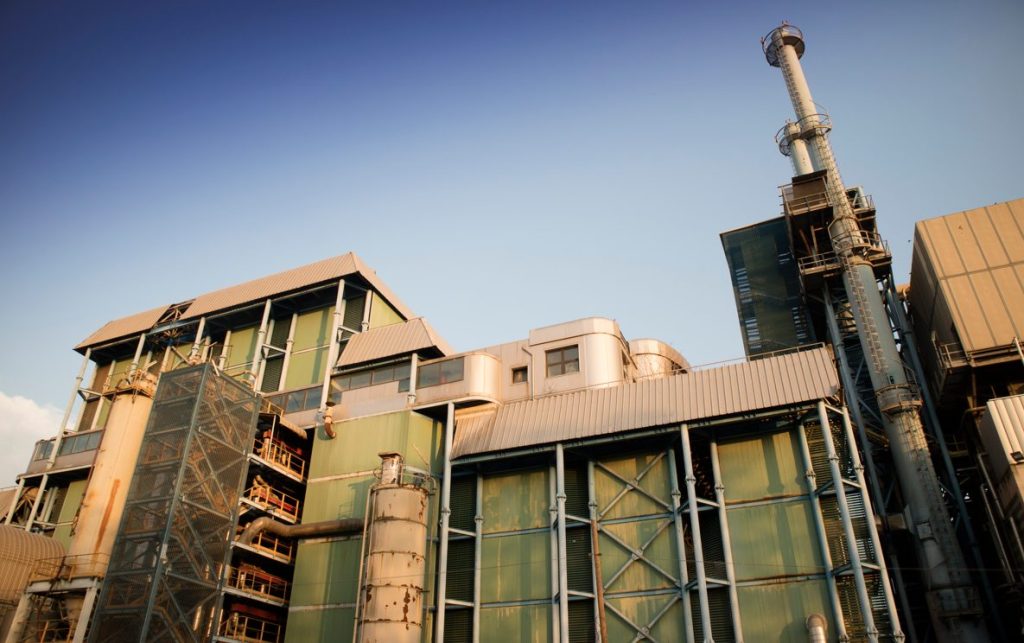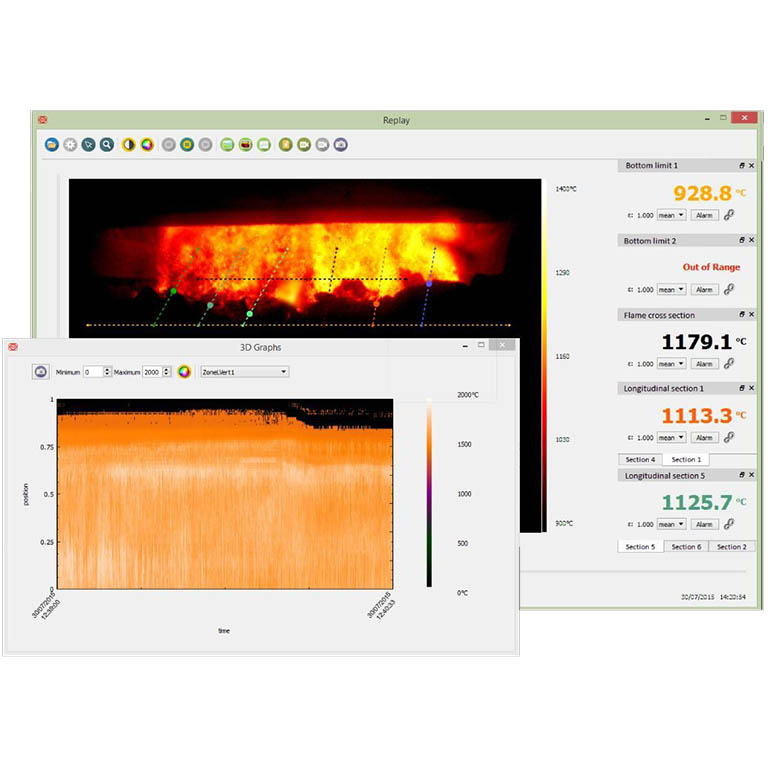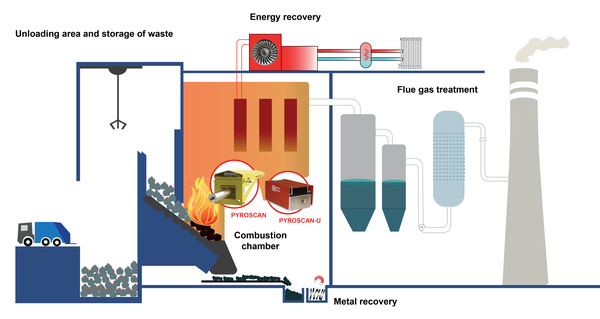Every year, 2.12 billion tons of waste is generated globally. While over 75% of it is recyclable, we only recycle 30%. Waste-to-energy is a technology which is more and more used to generate energy (power and heat) from the sustainable management of municipal solid waste, 50% of which is considered as renewable. Waste incineration involves the combustion of organic substances contained within municipal solid and industrial standard waste material. Each ton of waste that is burnt and converted to energy can power a household for a month.
Considering what is at stake, designers and operators of waste incineration plants continuously look for ways to improve their efficiency. Solutions exist. Among them, HGH’s thermography cameras provide consistent and reliable monitoring of the incineration process to ensure complete combustion of all organic material contained in waste. HGH Pyrometric cameras provide numerous data which can be fed in real time into control systems to optimize the operation of the installation.

A modern incineration plant shall ensure complete combustion of all organic material contained in waste while minimizing emissions, maximizing recovery of heat generated in the furnace and optimizing maintenance and operating costs.
To be able to burn materials that are sometimes very solid, incinerators must reach a temperature which is usually between 850°C and more than 1 100°C. This temperature and its distribution must be controlled to avoid the creation of hot spots where concentrated heat might damage the grate or the walls of the furnace; and to ensure that heat is released at the proper location to be collected and transferred efficiently to the boiler. As they measure temperatures at any point in the image, HGH thermography cameras allow to map temperatures in the combustion area and to locate hotter or cooler places.

Areas of interest can be monitored specifically and associated to temperature alarm thresholds to warn the operators when the risk increases to damage the furnace or to increase emissions above critical values, to burn waste too fast or too slowly…

Slag and ashes at the outlet of the grate shall not include residual organic materials when incineration is complete. An efficient way to ensure such compliance is when the combustion stops early enough before the end of the grate; but far enough from the inlet of the furnace anyway, so that temperatures are evenly distributed over the grate, and heat is released progressively and at the proper location to ensure efficient transfer. The accurate control of the location where the combustion stops, or flame front, is of paramount importance for the effective operation of the installation. To that aim, HGH has developed a dedicated algorithm specially designed in partnership with worldwide leaders in waste incineration to provide accurate and real-time flame-front detection in furnaces of waste-to-energy plants. The location of flame front is transferred in real-time to the furnace control system which will adjust the speed of the grate and the air flow in various areas, and which will turn on burners if needed.
The many measurements made at a high rate by HGH cameras are pre-processed and made available in real time through standard data interfaces to be used directly by control systems. Such continuous, small-step adjustments of the operating point of the furnace minimize energy consumption and mechanical constraints in the actuators, thus reducing operating and maintenance costs. Not to mention the possibility to implement high-level algorithms and expert systems which will further improve the overall performance of the installation.
Waste incineration plant: Pyroscan and Pyroscan-U thermographic cameras are respectively used inside and outisde the combustion chamber to monitor the combustion process.
HGH heavy-duty camera PYROSCAN is basically available in two configurations
PYROSCAN is a temperature-resistant camera which can be fitted with an automated insertion / retraction mechanism, allowing its water-cooled endoscope to be inserted inside furnaces to capture images close to the area of interest, without masking or attenuation of signal.
PYROSCAN-U is a ruggedized camera which is installed outside the high temperature burning zone of furnaces, looking at the calcination area through a standard window. It works at ambient temperature, without any cooling system, and its compact design supports implementation in space-constrained areas.
Both versions of the system capture images that are processed by a dedicated powerful software, providing an interface with the DCS (Distributed Control System) in real time. The intuitive HMI of the system displays enhanced visible and thermal images, and provides the user with a complete toolbox to analyse data history and trending, temperature distributions and profiles, to record and replay temperature data for further in-depth analysis…



